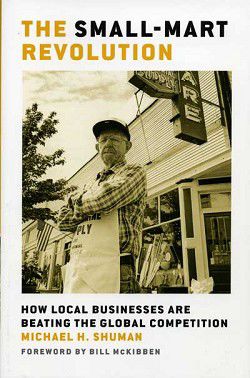BOOK REVIEW: Local businesses can thrive despite global competiton
Published 5:00 pm Wednesday, June 25, 2008

- The Small-Mart Revolution: How Local Businesses Are Beating the Global Competition, by Michael H. Shuman. Berrett-Koehler: 2007.
Are Wal-Mart and the globalized economy the inevitable future, as so many people seem to believe? This book provides examples of local businesses succeeding in the face of global competition, and reasons why this trend is likely to continue or accelerate.
The book also describes the benefits of locally owned business and a localized economy, and what consumers, investors, entrepreneurs, and policymakers might do to encourage it. The benefits include better economic stability and diversification, better citizenship, and a better local multiplier.
Trending
The local multiplier is a key concept. It represents the amount of economic activity a given dollar creates before it leaves. If you buy something that is not produced locally, such as gasoline or bananas, most of that money leaves immediately, leaving only the markup of the local seller to recirculate in the county and contribute to local jobs, businesses, tax base, and infrastructure. Some expenditures, such as credit card finance charges or mortgage interest to an out-of-state bank, are 100-percent leakage. But if you buy locally produced food or firewood, products or services, you contribute much more to the local economy. The more a local economy can replace its imports with locally produced goods and services, the less leakage, and the more prosperity it can create out of a given amount of income.
Unless a local economy has a good multiplier, increased earnings from increased exports aren’t likely to help much. Good techniques exist for assessing local leakage. “Without a leakage analysis, economic developers cannot possibly know what the best investment of scarce public resources might be,” Shuman writes.
Several factors are increasing the competitiveness of local economies. Rising energy costs, as well as the decline of the dollar, will make imports more costly and local production more competitive. Biomass fuels may be a local example of that. The shift toward a service economy may help local economies, particularly where physical location matters.
One theme is that governments of all types have tended to favor and subsidize large non-local businesses. Shuman hopes that this era will come to an end, as the extent of its damage to local economies becomes better known.
The book occasionally engages in less-than-helpful stereotypes: “Most people would gladly shell out a nickel more for a fresh loaf of bread from the local baker rather than buy its cheaper, tasteless equivalent at Safeway.” It is better when citing specific examples, like this one: Powell, Wyo. (pop. 5,375) lost its general merchandise store. They tried and failed to lure a big-box retailer. So they followed a recent example from Plentywood, Mont. Powell raised $325,000 from 328 investors, mostly local. The Powell Merc has been profitable since it opened in 2002 and has served as an example for other towns.
Peter Donovan lives in Enterprise and serves on the board of Wallowa County Business Facilitation.









